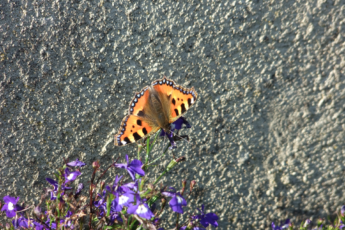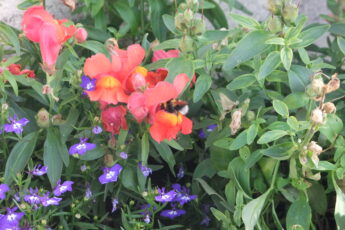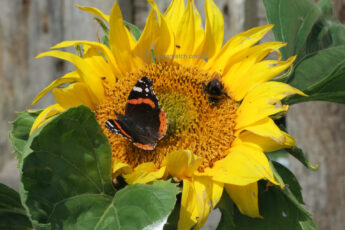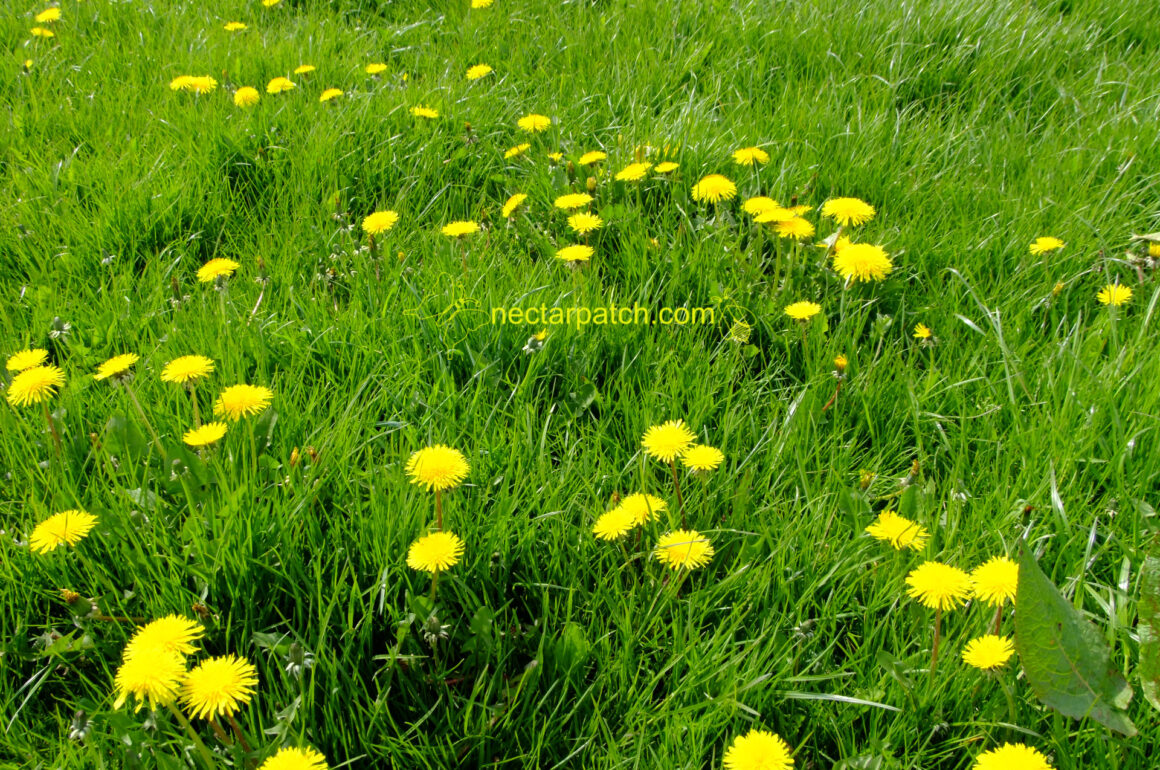
It’s no secret that the population of bees is declining, due to both use of chemical pesticides and loss or destruction of habitat.
“If the bee disappeared off the surface of the globe, then man would have only four years of life left. No more bees, no more pollination, no more plants, no more animals, no more man.”
~ Albert Einstein
Luckily more of us are becoming aware of their plight and are doing what we can to help. One of the ways we can do that is by planting a bee lawn. But what exactly is it?
A bee lawn is much like your usual lawn; however, the grass is blended with low growing perennials to attract pollinators, that will bloom again once mowed. Ideally, they will be ones that bloom at different times of the year, from early spring through to late autumn in order to provide a plentiful nectar supply to the bees throughout the year. You can still use it like you would a normal lawn, e.g. you can still sit on it, play on it etc. the difference is that you’ll also be sharing it with other pollinators, providing them with much needed nutrients.
How do I create a bee lawn?
In this post I’m going to list 3 different ways to create a bee lawn. It all depends on the type of garden you have, how much time you have, and your own personal circumstances/preferences.
Firstly, you would need to decide whether you want the whole lawn to be a bee lawn, or if you just want to dedicate certain sections to it.
For example, you could have the bee lawn in just one corner of the whole area, or leave a strip around the perimeter of it, or you could leave the whole lawn to be a bee lawn and mow pathways through it which can look really effective.
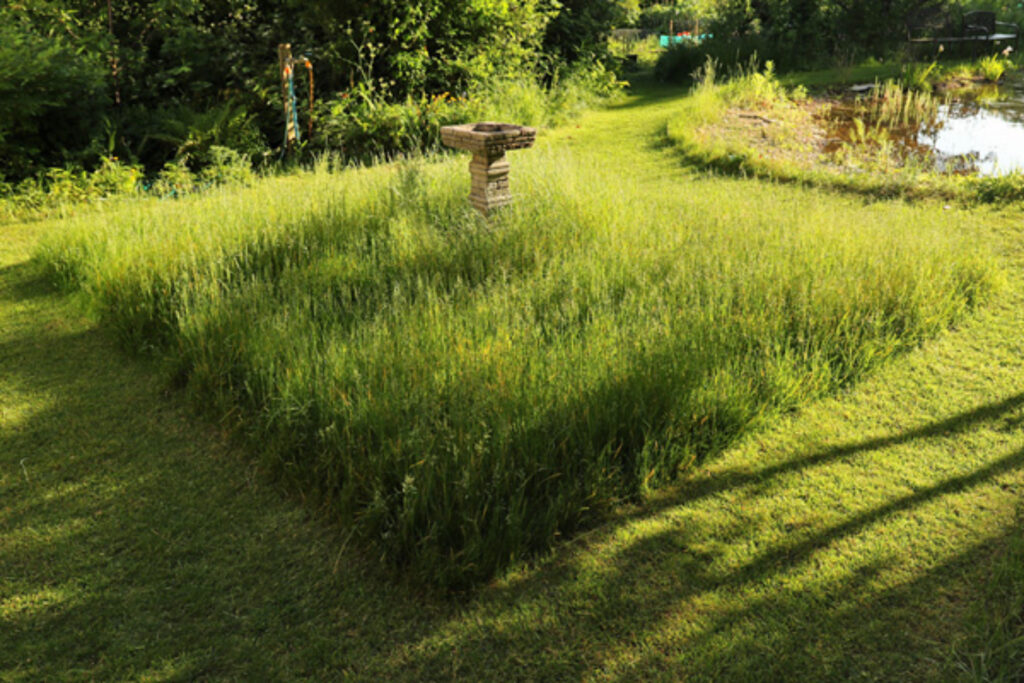
Once you’ve decided where you want it then you can create it using one of the following methods:
Method 1 – manage it differently
If you already have an existing lawn, but don’t have the time to plant any new seeds, or really do much work to it then you could think about just managing the lawn you have in a different way. This involves you decreasing the number of times you mow it, and just leave the grass to grow taller. After a week or so, you’ll start to notice flowers coming through – these will be native flowers that you would probably normally pull up as soon as they come through, like daisies, dandelions, clover etc. However, this is what makes a bee lawn, natural native flowers that the bees absolutely love!

A downside of this method though is there is no guarantee how many flowers will come through or what they’ll be – you could end up only getting a small patch of daisies which only a few bees will visit.
Method 2 – scarify the lawn
If you have the time to work on your lawn a bit more, then you could open up bare patches through scarification. Again, you would have already decided where you want the bee lawn to be (the whole lawn, certain sections, corners etc.) You then introduce the pollinator plants and wait for them to grow with the grass. Cut back on the amount of times you mow, and you’ll soon be enjoying the sound of happy buzzing bees 😊
Method 3 – pollinator lawn mix
If you are lucky enough to be starting a new lawn from scratch, the easiest way to create a bee lawn would be to buy a specialist pollinator lawn mix which you can purchase from most garden centres / nurseries nowadays. This specialist mix will give you the best balance required.
Regardless of which method you choose, remember not to use any chemical fertilisers, or weed killers… you want everything to grow naturally.
Do I need to maintain it?
Bee lawns do require maintenance, but not as much as a manicured lawn! It will still need cutting but only once every 3-4 weeks depending on the weather.
By letting the grass grow to around 4 inches or more, it will encourage more flowers to bloom. When you do get the lawnmower out, don’t mow the lawn short, cut it back to around 3 inches instead (this is usually the lawnmowers highest setting).
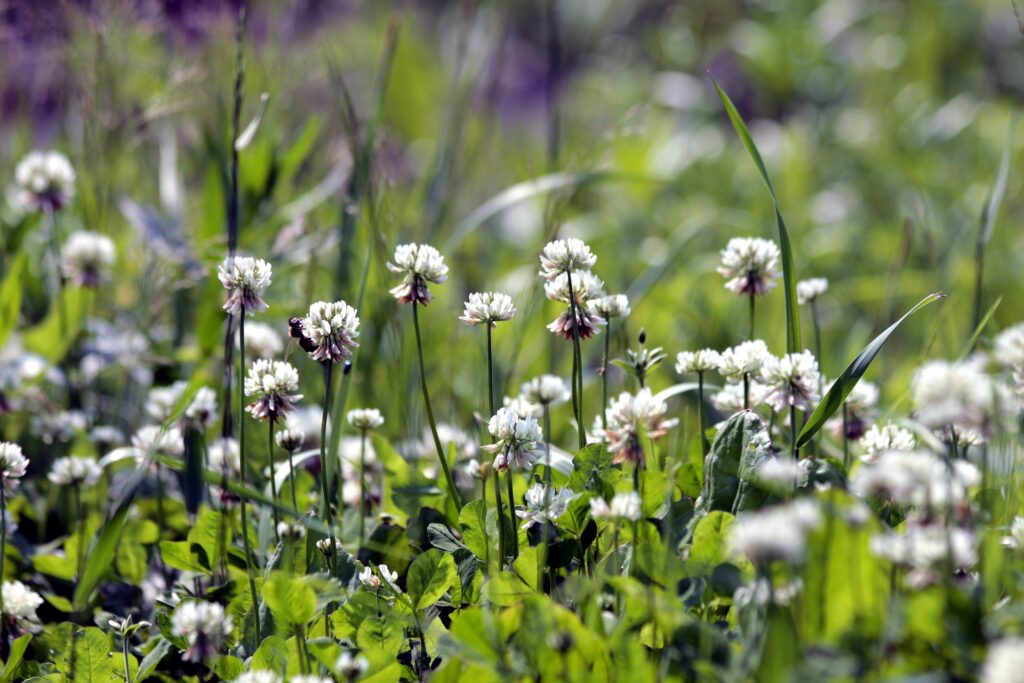
If you have introduced clover (which is recommended as bees LOVE it!) then you’ll notice that it stays green, even during dry periods, so looks good AND once it’s mown, it is great for the compost heap.
Be practical
Obviously, it depends on your own circumstances as to whether a bee lawn would be practical for you. They’re not for everyone!
For example, you might have toddlers who run around barefoot in the garden and could get stung by foraging bees. Maybe a bee lawn is not ideal for you, but you could get around it by dedicating a specific area for the bees – not necessarily in the lawn itself, but a corner of the garden where you can plant flowers to attract not only bees, but also butterflies and moths.
If you don’t like to walk in taller grass, or you find it difficult to, then you could mow pathways in the lawn, or leave the taller areas along the edge of your lawn.
What if you have no lawn at all? Don’t worry, you can still help the bees! You could plant a mixture of annuals and perennials in containers, hanging baskets or window boxes instead. You could also plant herbs to attract pollinators – a lot of them are loved by bees, butterflies, and moths especially when you let them go to flower.
Remember that it doesn’t matter what size area you have, it’s about what you put in it for the bees that counts 😊
What are the benefits of a bee lawn
The advantages of having a bee lawn are plentiful!
Obviously, the main benefit is to the pollinators – the bees love it! It doesn’t matter how big an area your bee lawn is, you’ll be helping the bees enormously.
Not only is a bee lawn good for bees, it has great benefits for us too!
Firstly, you’ll save time because you won’t be cutting your lawn every week in the summer, as you would a manicured green lawn! Check out this great new campaign No Mow May by Plantlife 🙂
Secondly, if you normally pay a gardener to cut your grass for you then you’ll also save a bit of money due to the low maintenance of the bee lawn – happy days!
Thirdly, and I think this is the main benefit to us… it is good for our mental health. Today, a lot of us find it hard to switch off… to disconnect from all the devices that are *supposed* to make our lives easier! All those notifications going off every 5 minutes, dragging us back into the world of social media, work, emails…
Being out in the garden, surrounded by nature has a great impact on our wellbeing. This article by Thrive – a gardening for health charity in the UK – states that “Research in Sweden, for example, found that the more people used their gardens, the fewer incidents of stress they suffered.”
Surely that’s a good enough reason to start a bee garden of your own 😊

